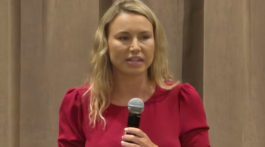Black and Hispanic residents in Indiana and Marion County experience significant gaps in education outcomes and employment opportunities compared to white residents, a new analysis shows. Disparities are pronounced in K-12 education and continue through postsecondary education and the workforce, hindering individuals’ ability to prosper, businesses’ ability to thrive, and the vitality of the city and state.
The report, released by Business Equity for Indy’s (BEI) Learning and Talent Opportunities Taskforce, examines public data from the U.S. Census, Indiana Management Performance Hub and other state agencies. The Richard M. Fairbanks Foundation and Ascend Indiana produced the analysis.
In Marion County, of the 3,077 Black students who graduated high school in the 2012-2013 school year, just 442 graduated from an Indiana public postsecondary institution in six years with either a two- or a four-year degree. And of the 595 Black Marion County high school graduates who graduated from one of Indiana’s public postsecondary institutions in 2014-2015, only 339 remained working in Indiana five years later.
Five key factors contribute to the crisis:
- Falling Behind in K-12: Too few Black and Hispanic students are achieving academic mastery in core subjects like math, English/language arts and science. In 2018-2019, 15% of Black students and 19% of Hispanic students in Marion County passed the ILEARN exam, compared to 45% of white students. Black and Hispanic students were also disproportionately impacted by learning losses caused by COVID-19.
- High Rates of Waiver Diplomas: In Marion County in 2018-2019, Black high school graduates were nearly twice as likely as white graduates to receive waiver diplomas (22% compared to 14%). Students with a waiver diploma who enroll in college are more likely to need remediation and less likely to persist than students who did not require a waiver diploma.
- Declining College Enrollment: As college enrollment declines across the board, enrollment rates for Black high school graduates in Indiana plummeted by 12 percentage points over the last decade. For white high school graduates, enrollment fell, but by half as much – six percentage points – meaning the enrollment gap is widening.
- Lack of STEM College Graduates: Although there is a general shortage of Black and Hispanic college graduates, gaps are particularly acute in STEM fields, which tend to be linked to higher wages. In 2019-2020, only 12% of Black postsecondary graduates from Indiana’s public postsecondary institutions earned a STEM degree, compared to 17% of white graduates and 31% of Asian graduates. There was also a large gender gap, with 31% of male graduates earning a STEM degree compared to 10% of female graduates.
- Shortfall to Finish: Of Marion County’s 2012-2013 high school graduates, only 14% of Black students continued on to complete a 2- or 4-year college degree at a public institution in the state within six years, compared to 28% of white students.
As a result, Black and Hispanic residents have lower rates of postsecondary attainment and lower median wages compared with white residents in Indiana and Marion County.
Indy Politics spoke with Jason Kloth, president and CEO of Ascend Indiana, and Adrienne Sims, PsyD, Vice President of Talent Management for OneAmerica.
You can hear them both in the Leon-Tailored Audio above. It runs for about 19 minutes.













